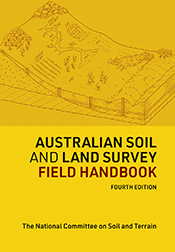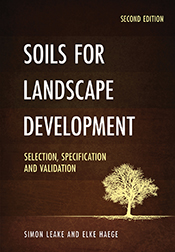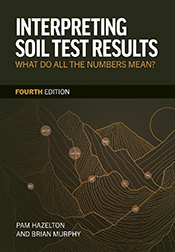The Australian Soil Classification
Australian Soil and Land Survey Handbooks Series Third Edition By: R F Isbell, National Committee on Soil and Terrain
This third edition provides updated information on Australian soils, including Arenosols.
The Australian Soil Classification provides a framework for organising knowledge about Australian soils by allocating soils to classes via a key. Since its publication in 1996, this book has been widely adopted and formally endorsed as the official national system. It has provided a means of communication among scientists and land managers and has proven to be of particular value in land resource survey and research programs, environmental studies and education. + Full description
Classification is a basic requirement of all science and needs to be periodically revised as knowledge increases. This third edition of The Australian Soil Classification includes updates from a working group of the National Committee on Soil and Terrain (NCST). The main change in this edition accommodates new knowledge and understanding of the significance, nature, distribution and refined testing for soils comprising deep sands, leading to the inclusion of a new Order, the Arenosols. The introduction of the Arenosols Order led to a review and changes to Calcarosols, Tenosols and Rudosols.
The Australian Soil Classification is Volume 4 in the Australian Soil and Land Survey Handbooks Series.
- Short descriptionNews
An online version of this title, which contains minor updates, is available from Soil Science Australia (external link).
Details
Paperback | March 2021 | $ 59.99ISBN: 9781486314775 | 192 pages | 245 x 170 mm
Publisher: CSIRO Publishing
Illustrations, Maps
PDF | March 2021 |
ISBN: 9781486314782 | 192 pages
Publisher: CSIRO Publishing
Illustrations, Maps
ePUB | March 2021
ISBN: 9781486314799
Publisher: CSIRO Publishing
Features
- An essential reference for scientists to understand and communicate about Australian soils
- Includes major updates to knowledge, including the significance, nature, distribution and refined testing for soils comprising deep sands
- The ASC has been formally endorsed as the official national soil classification system
- Glossary and terms used are closely aligned with the definitions in Australian Soil and Land Survey Field Handbook ('The Yellow Book')
- The print edition is flexibound for field work
Contents
The authorsAcknowledgements
Preface to the third edition
Background
How to classify
Key to Soil Orders
Anthroposols [AN]
Arenosols [RE]
Calcarosols [CA]
Chromosols [CH]
Dermosols [DE]
Ferrosols [FE]
Hydrosols [HY]
Kandosols [KA]
Kurosols [KU]
Organosols [OR]
Podosols [PO]
Rudosols [RU]
Sodosols [SO]
Tenosols [TE]
Vertosols [VE]
Glossary
Colour Classes
References
Appendix 1: Use of codes and confidence levels in recording classification of soil profiles
Appendix 2: List of codes and equivalent class names
Appendix 3: Class names and equivalent codes, and the level at which they occur in the Soil Orders
Appendix 4: Analytical requirements for the Australian Soil Classification
Appendix 5: Approximate correlations between the Australian Soil Classification Order and other soil classifications
Appendix 6: History of the development of the Australian Soil Classification
Appendix 7: Summary of changes in the third edition
View the full table of contents (PDF, 62 kb)
Authors
The National Committee on Soil and Terrain (NCST) is comprised of representatives from key federal, state and territory agencies.








